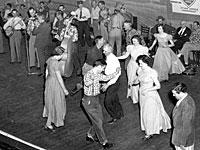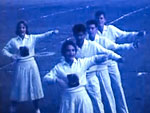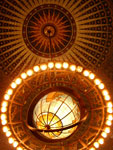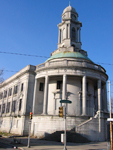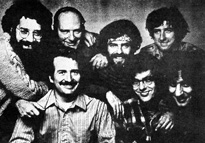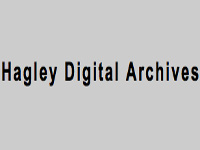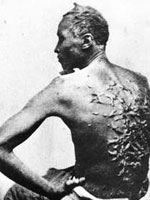Journal of American History Review: Robert Cornellier's Black Wave—The Legacy of the Exxon Valdez
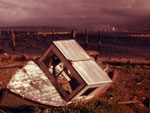
This is the third in a series of film reviews reprinted from the Journal of American History. These reviews model ways of looking critically at popular films, documentaries, miniseries, and other history-based features. Look for one each month!
When historians of American government and society recall the past decade or two, they are likely to feature economic recession and state intervention, new information and networking technologies, gay rights, the "war on terror," and national elections. Environmental historians may add global climate change to the list, but even more certainly they will add a string of disasters that can only be called "natural" with an asterisk, like the batting record of a juiced ballplayer.
Floods, epidemics, hurricanes, wildfires, mud slides and cave-ins, even famine, invasive species, and toxic releases are hardly new. They are among the normal, albeit irregular and abrupt disruptions that have come and gone since the big bang. The ingredients of recent disasters remain natural, but the consequences have grown ever more colossal with human intervention. With "progress," sources of inconvenience and insecurity in everyday life are corralled and concentrated someplace else. Still, they seem ever in wait on the periphery of sight. States of emergency have become regional rather than local or personal, wholesale rather than retail events. For most people, especially the affluent, experience with disasters is less frequent but also more overwhelming.
The explosion and well breach that began April 20, 2010, in the Gulf of Mexico—the BP/Deepwater Horizon spill—is but the latest, headline-grabbing instance. The public seems at least as eager as the perpetrators to get it out of the news. Disaster fatigue is now ubiquitous in America: "Someone, quickly make everything right again (or close enough to it), so we can put it behind us." Public concern has proven hard to sustain for survivors of Hurricane Katrina and the earthquake in Haiti and hard to stir for new, even larger cataclysms, such as for Pakistan after the July 2010 monsoon.
The fact is, certain kinds of disasters, including giant "accidental" spills of nasty stuff ("hazmat incidents," in emergency management lingo), have long been routine. The Oil Spill Intelligence Report, which has been logging major releases since 1978, has counted an average of about 240 per year. In other words, they are predictable, even if avoidable, near daily events. And that is counting only the well-documented, dramatic (over ten thousand-gallon) cases. A full sixth of those spills have been larger than the U.S. standard: the one that is the subject of Black Wave. That spill began soon after midnight, March 24, 1989, when the supertanker Exxon Valdez ran hard aground in Prince William Sound, near bucolic Cordova, Alaska.
Ever since, reporters have used the size of that one spill (disputed but usually estimated at 11 million gallons) as the measure of all others. Like Watergate in politics, it set the standard for failure in environmental stewardship. For example, observers devoted extraordinary resources to determine whether BP/Deepwater Horizon in 2010 was spilling as much as Exxon in 1989, first in total and then per week, then per day. Now that the latest bp spill (like dozens before it) has proven radically larger than the Exxon Valdez, Americans might wonder if the benchmark will change. I bet not, and by design and example the documentary Black Wave provides a convincing explanation.
The strongest element of the film's persuasion is its exquisite before-spill setting: the breathtaking landscape and seascape, purple mountain's majesty, soaring eagles, grazing moose, and gull-trimmed trawlers. The local men and women look like they were ordered out of an L. L. Bean catalog, less the African or Asian minority. They are hardworking, sensible, clean-living, with a keen eye on the horizon, strong but also soft-spoken and grateful for their majestic, bountiful surroundings. Just about everyone seems inherently attuned to nature, community, and nuclear "family values."
And then, one day, out of the blue for all but a prophetic few (fisherman, of course), disaster strikes. A giant, unfeeling, greedy corporation takes a supertanker-sized [dump] on paradise.
You do not have to know much history or science to be outraged. The jaw-dropping before-and-after imagery of Black Wave makes the "legacy of the Exxon Valdez" (the subtitle of the film) undeniably grim. The spill was horrid—huge, ugly, stinky, sticky, deadly, and, it is essential to add, persistent. Clean-up workers are still suffering and dying. The fish and the fleet that marketed them have not and will probably never fully recover.
The chief legacy of the Exxon Valdez may be as a standard of environmental loss, but it can also be remembered for the human failings that caused and followed it. As the documentary well shows, the damage was and remains very much man-made. There was negligence and intrigue, broken promises (or something close enough to it), abuses of power, and cruelty on the part of government regulators, courts, legislators, and most of all the Exxon Corporation. In their wake lie not only the corpses of tens of thousands of wildlife, but also illness, stress, depression, bankruptcy, divorce, substance abuse, and suicide among the local population. The people whom Exxon put out of work and then on temporary payroll to clean up their mess are still suffering and dying from the spill's effects.
A layer of gooey sludge still taints sediments, while Exxon (now Exxon Mobil) invests hundreds of millions of dollars to limit its liability. Eighteen years passed before Exxon paid a dime of the $5 billion it owed Alaskan and native plaintiffs in punitive damages. The corporation only started paying after successfully reducing the award—thanks to the Supreme Court, with the encouragement of Gov. Sarah Palin—by 99 percent. In a couple of days Exxon Mobil profits covered the loss.
One of the film's most stirring scenes features . . . reporters challenging classaction victims of the spill, just outside the court. One journalist asks, in effect, why are you still whining, what with so much recovery effort, time, and money spent since 1989? A perfect retort comes from a knowledgeable, disciplined, and persistent defender of the environment, Dr. Fredericka "Riki" Ott, Cordova's Erin Brockovich, Lois Gibbs, and Karen Silkwood rolled into one. (Ott is also the author of Sound Truth and Corporate Myth$: The Legacy of the Exxon Valdez Oil Spill [2005] and Not One Drop: Betrayal and Courage in the Wake of the Exxon Valdez Oil Spill [2008].) With barely contained rage, Ott brandishes a jar, like ones that viewers just saw filled on Alaskan shores. It contains a sample of Exxon crude freshly dug from a vast stratum beneath shorelines that were declared "cleaned" a couple of decades ago. The effects of the spill can only be diminished from points of view that seem dumb, superficial, or warped by corporate and government propaganda.
Given this unapologetically one-sided story, there are plenty of points to contest. For example, the filmmakers themselves provide evidence that victims put words in the perpetrators' mouths. Several of the film's featured claims about conventional wisdom in spillrelated science and medicine would not pass peer review. There are significant gaps, for example, between Ott's assertions about toxins and those vetted by the Centers for Disease Control and Prevention. Even as a few details are arguably wrong or overstated, they are also short of being crucial to the bottom line.
Two points, though, amount to more than a quibble. The first is the film's treatment of the suicide of Cordova's former mayor Bob Van Brocklin. With a staged serial reading of his suicide note, the film treats him like a martyr to the cause, glorifying an act of self-destruction that may be better considered sad and futile. In a classroom, for sure, the morality and efficacy of suicide or so honoring it deserves careful discussion.
A second point worth discussing is the point of view that the film normalizes. At times, it seems smug, beginning with the assertion that its subject, the Exxon Valdez, was "the worst environmental disaster in North American history." That is more than exaggeration. Limiting attention to oil spills, and discounting the ones North Americans perpetrated overseas, there are at least three that were vastly worse: the Lakeview Gusher of 1910 (278 million gallons in California), the well Ixtoc I in 1979 (140 million gallons in the Gulf of Mexico), and the tanker Odyssey in 1988 (43 million gallons off Nova Scotia).
But these contenders are tougher to frame within the mythology of all-American populism, albeit fostered by a Canadian film crew. Black Wave pumps up the outrage by presuming a chasm between the world that the Exxon Valdez made and the one to which presumptively normal Americans—versus, say, Mexicans (Ixtoc) or Canadians (Odyssey) or for that matter people in Los Angeles—are entitled. Fishermen presumably have a "natural right" to their way of life, to acquire their own boats, and to get a fair return on investments. Everyone, we are told, who works hard should be able to maintain a six-digit salary and purchase a home with a good view, albeit on land stolen from Indians. Government, we are told, should not be cozy with business. . . unless it is mine.
This populist perspective on neglect and desperation of post-spill Cordova is hard to square not only with its own logic but also with some facts, including the infamous flow of federal dollars to Alaska from the lower forty-eight. On average Cordova still has lower unemployment, more home ownership, and higher annual income than the United States as a whole, and a fair share of that success comes from resource exploitation, integrated markets, and the very pipeline that brought the oil to the Valdez in the first place. In the light of recent history (see, for example, Paul Greenberg's Four Fish [2010]), it is hard to think of harvesting wild salmon as more sustainable or ethical than mining oil.
To balance the film, it may be wise to consult supplementary material. There is, for example, a fine list, "Exxon Valdez Oil Spill: Resources for Teachers and Students" (March 2009), as well as a huge, free collection of primary and secondary sources online from the Alaska Resources Library and Information Services as well as a broader-gauged collection edited by James K. Mitchell, The Long Road to Recovery (1996). If the perspective must remain narrow, consider privileging native peoples, whose relationship to the Alaskan environment has had more to do with subsistence and stewardship than entitlement to the American dream. Supplementing the film with such sources and points of view may be the best use of the legacy that the Exxon Valdez sadly began and the lessons that its survivors and Black Wave profess.
This review was first published in the Journal of American History, Vol. 97, No. 3, 911-914, 2010. Reprinted with permission from the Organization of American Historians (OAH).
Visit the Black Wave website here.
